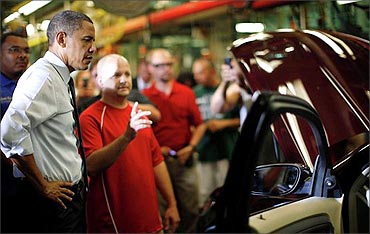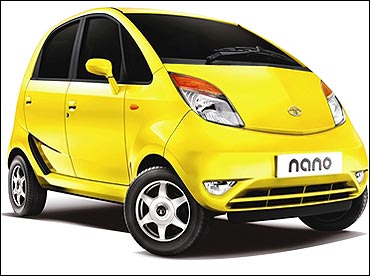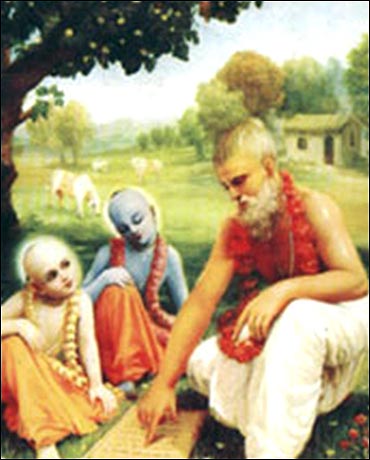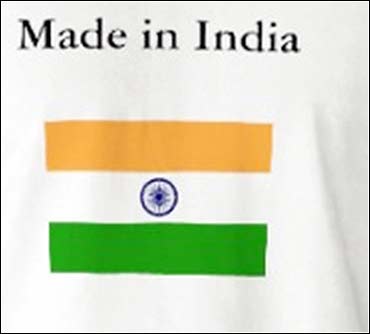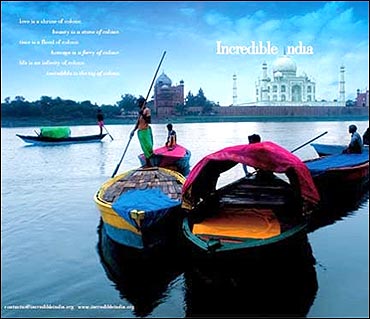 | « Back to article | Print this article |
How India can be a global business powerhouse
In the early 1900s America globalised by building on Ford's concept of mass production. The invasion was driven in the food, automotive and personal product categories, such as Coke, McDonalds, GM, Ford, and Procter & Gamble, and later by technology companies like IBM and Microsoft. After World War II, Japan globalised by miniaturising American products and building electronic expertise - thus were born global giants like Toyota, Sony, Mitsubishi and Honda.
Click NEXT to read more
How India can be a global business powerhouse
And India became the "technology" outsourcing back office for many global companies in the early 21st century. Where does Brand India go from here if it wants to become a truly global economic force?
How India can be a global business powerhouse
Also, many Indian corporate magnates have stated their intent to create global firms. These are steps in the right direction which can help India become a global power.
At the same time, it would be worthwhile to crystal-gaze and identify the sectors in which India can make it big, given its values, core strengths and competences.
Click NEXT to read more
How India can be a global business powerhouse
Seven categories or territories seem to offer India a chance to deliver extra value and differentiation to the world.
Click NEXT to read more
How India can be a global business powerhouse
Click NEXT to read more
How India can be a global business powerhouse
(ii) Food and fashion: India has strong associations in these areas in the developed world. In food, India has a wide range of sweetmeats to add to the already familiar tandoori chicken, Hyderabadi biryani and spicy samosas.
In fashion, Indian fabrics and colours give it a distinct edge. These products, suitably adapted to local tastes and branded, could be made to reach a larger consumer group.Click NEXT to read more
How India can be a global business powerhouse
(iii) Hospitality: Hotels and restaurants provide India an opportunity to leverage its traditional values of warmth and friendliness to serve a larger world. Most Indians subscribe to the concept of "atithi devo bhava" (guest is god).
Click NEXT to read more
How India can be a global business powerhouse
(iv) Entertainment: whether it is movies or soaps, entertainment in India has developed a distinct character and DNA.
In an increasingly stressful world where people are seeking to escape all the time, the "nonsensical and masala mix" Bollywood and "melodramatic" television serials provide alternative entertainment to the more serious and thought-provoking Western celluloid. India's rich story-telling culture adds to this.Click NEXT to read more
How India can be a global business powerhouse
(v) Spirituality: India can formally brand and sell it in the form of yoga, ayurveda, homeopathy, vaastu and so on. India has a rich heritage of holistic arts and sciences that intrigues and interests many in the world.
Click NEXT to read more
How India can be a global business powerhouse
(vi) Mass marketing: it is a big weapon to enter the global markets. In the past 60 years after Independence, India's philosophy of balancing socialism with capitalism has provoked marketers to think of value with volume and urban with rural.
Thus, the average Indian business mind has developed the core competence of creating products and mixes to reach the less privileged.
The Nano, the sachet and products with cheaper ingredients are examples of this expertise. Brand India can leverage this to move a step ahead of traditional global marketing giants in the less developed world.
Click NEXT to read more
How India can be a global business powerhouse
(vii) Education: Given the Brahminical culture of knowledge and learning in the Indian society, there could be a jewel hidden within India that marketers could unearth and leverage to build institutions of evolved learning.
There is something powerful in the traditional gurukul system of education that can be re-engineered to suit contemporary times to open a new "school" of education. Click NEXT to read moreHow India can be a global business powerhouse
Clearly, there is much that Brand India can explore beyond IT and business outsourcing for the world to look towards it as a global business powerhouse.
However, remember that the opportunities are accompanied by challenges.
India has an assimilative culture which is able to imbibe the best of the world to which it is exposed and adapt it to its own culture. However, Indians are not too comfortable adapting to the outside world.
Click NEXT to read more
How India can be a global business powerhouse
The Indian mindset needs to change. To get into another culture, there is a need to adapt accordingly - just as many global companies have done successfully to gain dominance in India.
Similarly, Indians need to do away with the "exotic" tag, which makes India a curiosity, restricting it to being only a niche player.
Click NEXT to read more
How India can be a global business powerhouse
To become part of the mainstream, Indian values need to be made relevant and exciting.
For this Indian business houses need to see themselves as purveyors of change - being the creators of a new face of Brand India rather than merely leveraging India's traditional cultural values.
In the past two decades, Brand India has gained acceptance among the innovators (who are intrigued) and perhaps the early adopters (who have seen value).
Click NEXT to read more
How India can be a global business powerhouse
The time has come to expand the base and attack the early majority.
Trying to do anything and everything and seeing what works may not be the best way forward.
There is a need for a conscious strategy. Until then, Brand India will continue to be seen as "underdeveloped", as the world has tagged it.
The author is country head, Discovery and Planning, Ogilvy and Mather India.
